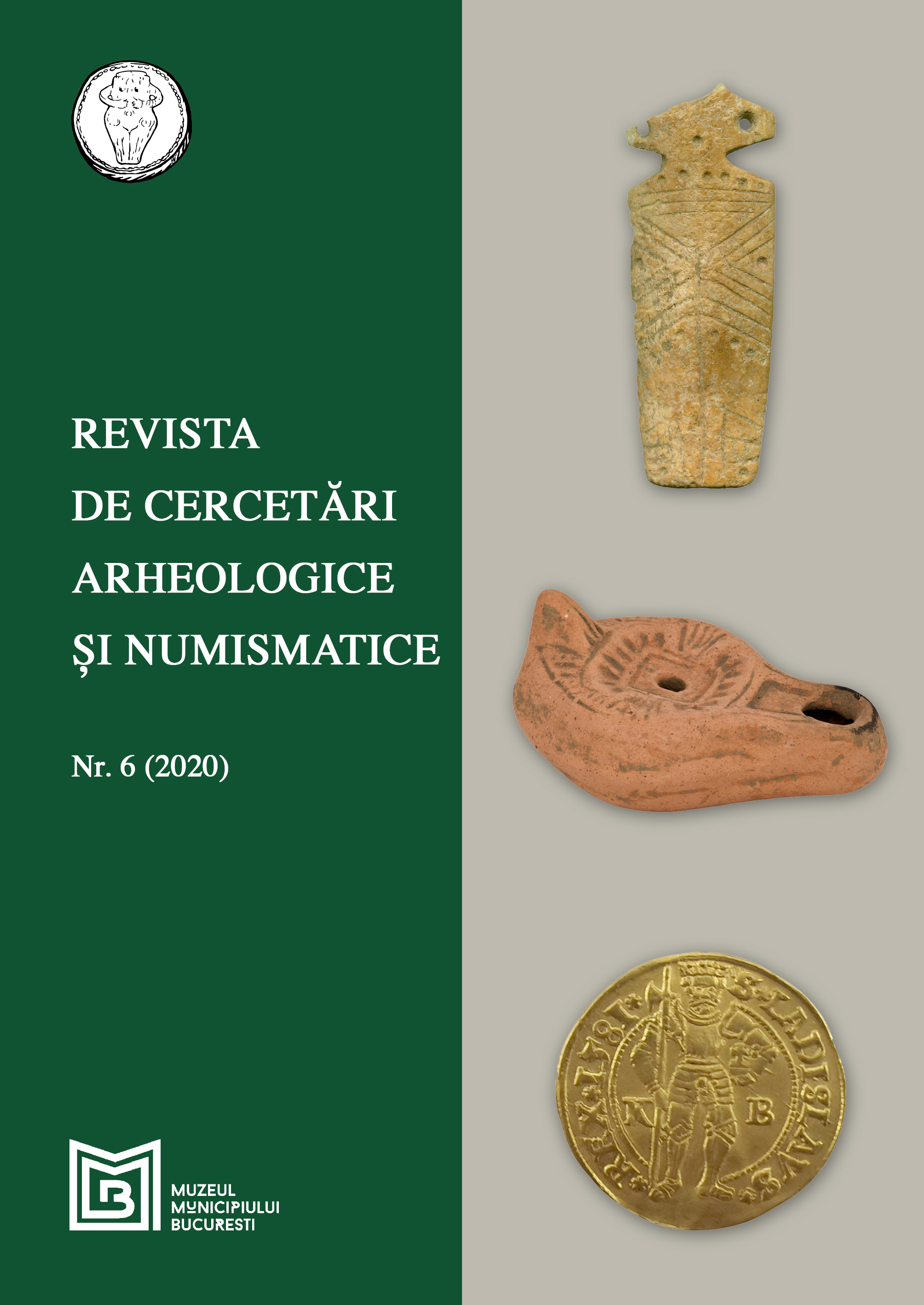MAHALAUA UNGURENI DIN CRAIOVA ÎN LUMINA DESCOPERIRILOR ARHEOLOGICE ȘI NUMISMATICE
THE UNGURENI SLUM FROM CRAIOVA IN THE LIGHT OF ARCHAEOLOGICAL AND NUMISMATIC DISCOVERIES
Author(s): Irina Maria Vlad, Radu Gabriel DumitrescuSubject(s): History, Archaeology, Local History / Microhistory, Social history, Middle Ages
Published by: Editura Muzeului Municipiului Bucuresti
Keywords: Museum of Oltenia;slum;Ungureni;archaeological discoveries;cemetery;
Summary/Abstract: Starting with the summer of 2018, the Museum of Oltenia has carried out an archaeological diagnostic excavation at Saint Nicholas - Ungureni Church to determine the presence or absence of archaeological materials, structures, complexes, following the building of the church belt. The intervention on the historical monument from the 18th century involved the carrying out of archaeological sections, perpendicular to each side of the church. Two and a half centuries ago, the cemetery of the Ungureni Slum was around the church, but the law for burials, decreed on 18th of March and promulgated on 27thof March, 1864, forbade any “burial in churches [...] in any building which gathers the believers of any religion to celebrate their worship [...] and not even outside these buildings, if these places are outside the cities or villages” so that the burials took place in the new “Red Cemetery”. However, it appears that there were burials around the church even after 1864, evidence being the coins of 2 and 5 bani 1867, discovered as a funeral inventory in a few graves. The leveling of the land, in 1885, led to the disappearance of any visible signs above the ground in the area of the church. After the excavations in 2018-2019, 58 tombs were found whose inventory is not very rich. Only in a third of these are jewelry pieces (rings, earrings), clothing accessories, and/or coins. In most cases, the coins are found next to adornments and are deposited in tombs both between the fingers and in the chest area. As for the coins, we can talk about Hungarian, Ottoman, Austrian, or Romanian monetary issues. In the 12 tombs containing numismatic inventory, 41 coins and coin fragments were discovered, which are chronologically staggered in the period 1579-1867. Most of the pieces were found in section I (north side of the church), with 26 coins being discovered here, dating from the 18th-19th centuries. On the other hand, in section II (south side of the church), in addition to 19th-century coins, we also find some issues that date back to the 16th and 18th centuries. In section III (east side of the church), coins from the 18th-19th centuries were found. No archeological materials were discovered in section IV (west side of the church). From the point of view of the nominal, the most valuable are the small ones: denari, akçe, para, kreuzer, bani, the only piece of greater value being a coin of 10 kreuzers, from 1764, perforated. The monetary items from the Church of St. Nicholas - Ungureni were extracted from the monetary circulation of the time and represent a sample of the small cash, available in one of the slums on the outskirts of Craiova in the 18th-19th centuries.
Journal: Revista de Cercetari Arheologice si Numismatice
- Issue Year: 2020
- Issue No: 6
- Page Range: 197-263
- Page Count: 67
- Language: Romanian

